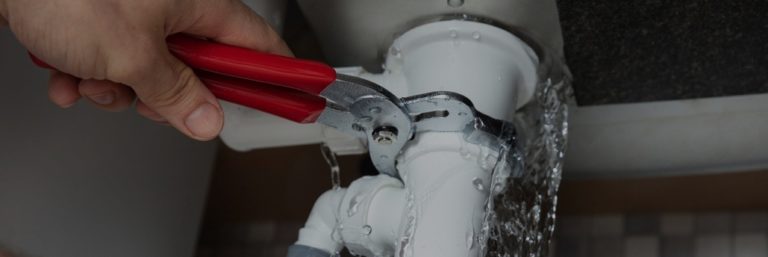Finding Concealed Water Line Leaks: Six Effective Techniques
Finding Concealed Water Line Leaks: Six Effective Techniques
Blog Article
They are making a number of good points relating to Locating water leaks overall in this article followed below.

Early discovery of dripping water lines can mitigate a prospective calamity. Aside from conserving you money, it will certainly decrease the irritation as well as stress. The minute you find a leak, calling your plumber for repair services is the most effective option. Some tiny water leaks may not be noticeable. If you can not find it with your naked eyes, here are some hacks that help.
1. Take A Look At the Water Meter
Every home has a water meter. Checking it is a guaranteed way that helps you uncover leaks. For starters, switch off all the water resources. Guarantee no one will certainly flush, use the tap, shower, run the washing machine or dish washer. From there, go to the meter and also watch if it will transform. Considering that no one is utilizing it, there should be no motions. If it moves, that suggests a fast-moving leakage. Also, if you detect no changes, wait an hour or 2 and inspect back once again. This suggests you might have a slow leak that might also be below ground.
2. Check Water Usage
Analyze your water bills as well as track your water usage. As the one paying it, you must observe if there are any kind of inconsistencies. If you identify sudden changes, despite your intake being the same, it means that you have leaks in your plumbing system. Remember, your water costs need to drop under the exact same range monthly. A sudden spike in your costs shows a fast-moving leak.
Meanwhile, a consistent boost each month, despite having the same practices, shows you have a slow leak that's also slowly rising. Call a plumber to thoroughly inspect your property, specifically if you really feel a warm location on your floor with piping below.
3. Do a Food Coloring Test
When it comes to water usage, 30% comes from toilets. If the shade somehow infiltrates your dish during that time without flushing, there's a leak between the storage tank as well as bowl.
4. Asses Outside Lines
Do not fail to remember to check your exterior water lines as well. Should water permeate out of the connection, you have a loosened rubber gasket. One small leakage can lose bunches of water and surge your water bill.
5. Examine the circumstance and inspect
Homeowners must make it a practice to examine under the sink counters and also even inside closets for any type of bad odor or mold and mildew growth. These two warnings suggest a leakage so prompt attention is called for. Doing routine assessments, also bi-annually, can save you from a significant trouble.
A lot more importantly, if you know your home is currently old, maintain a watchful eye on your heating systems, hose pipes, pipelines etc. Check for stainings as well as weakening as most pipelines and also devices have a life expectancy. They will certainly additionally naturally wear away as a result of damage. If you believe dripping water lines in your plumbing system, do not wait for it to intensify. Call a specialist plumber today so you don't end up with an awful mess in your house.
Early detection of leaking water lines can alleviate a prospective disaster. Some small water leakages may not be visible. Examining it is a surefire means that aids you find leakages. One tiny leakage can waste heaps of water and spike your water expense.
If you presume dripping water lines in your plumbing system, do not wait for it to rise.
WARNING SIGNS OF WATER LEAKAGE BEHIND THE WALL
PERSISTENT MUSTY ODORS
As water slowly drips from a leaky pipe inside the wall, flooring and sheetrock stay damp and develop an odor similar to wet cardboard. It generates a musty smell that can help you find hidden leaks.
MOLD IN UNUSUAL AREAS
Mold usually grows in wet areas like kitchens, baths and laundry rooms. If you spot the stuff on walls or baseboards in other rooms of the house, it’s a good indicator of undetected water leaks.
STAINS THAT GROW
When mold thrives around a leaky pipe, it sometimes takes hold on the inside surface of the affected wall. A growing stain on otherwise clean sheetrock is often your sign of a hidden plumbing problem.
PEELING OR BUBBLING WALLPAPER / PAINT
This clue is easy to miss in rooms that don’t get much use. When you see wallpaper separating along seams or paint bubbling or flaking off the wall, blame sheetrock that stays wet because of an undetected leak.
BUCKLED CEILINGS AND STAINED FLOORS
If ceilings or floors in bathrooms, kitchens or laundry areas develop structural problems, don’t rule out constant damp inside the walls. Wet sheetrock can affect adjacent framing, flooring and ceilings.
https://www.servicemasterbyzaba.com/blog/how-to-detect-water-leakage-in-walls/

Do you like reading about Finding hidden leaks? Make a comment below. We'd be glad to see your ideas about this page. Hoping that you visit us again in the future. Sharing is nice. One never knows, you might be doing someone a favor. Thank you for going through it.
Drains blocked? Dial. Report this page